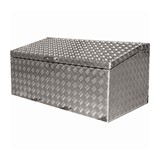The facility, complete with "cleanroom", will enable Swinburne researchers to manipulate nanoparticles – which are a fraction of the width of a human hair – with incredible accuracy.
This will make it possible for them to take their research in sensing, solid-state lighting and solar energy conversion to the next level.
According to Professor of Nanophotonics Saulius Juodkazis, his research group at the Centre for Micro-Photonics – which is looking at how cutting edge plasmonics techniques can be applied to improve the efficiency of solar cells – will benefit immensely from the new facility.
Professor Juodkazis, along with colleagues from Swinburne and the University of Newcastle, has recently published a paper in the journal Optical Materials Express, which shows that embedding gold nanoparticles within organic solar cells can increase their efficiency.
"A number of research groups are looking at how nanoparticles can be used to improve the efficiency of solar cells," he said.
"However most solutions focus on the placement of nanoparticles on the cells’ surface. Using this method, improvements in light capturing are sought at wavelengths where gold particles reflect and scatter light most efficiently.
"Our group took a different approach. We embedded nanoparticles within the cells’ sub layers to see what difference it would make in light harvesting and conversion to electricity.
"What we found was that there was an improvement in efficiency, however it was not at the spectral, or colour, position where the gold was scattering light, rather it was where the gold absorbed it. This suggested that the gold was not simply acting as a passive scatterer, through absorption it was improving light to electricity conversion."
While Professor Juodkazis is very pleased with this development, which was predicted by numerical simulations carried out at Swinburne, he is excited that he will be able to extend his research further in the university’s new plasmonics lab.
Housed in Swinburne’s recently completed $140 million Advanced Technologies Centre, it will be the first laboratory in the world to combine two complementary techniques that will enable both two- and three-dimensional fabrication and modification of nanoparticles.
"The cleanroom is a sterile environment that will allow us to fabricate and modify nanoparticles with more control than ever before and upscale their fabrication for industrial applications," Professor Juodkazis said.
"We’re developing novel nano-hands that will enable us to apply not only force but also torque on a nanoscale. This means we will be able to twist and turn nanoparticles, controlling their position with unprecedented accuracy."
Completing the researchers’ nano-toolbox, the nano-hands will allow the Swinburne team to significantly advance their research.
Swinburne’s new plasmonics laboratory was partially funded by the state government through a Victorian Science Agenda grant. The nano-lithography equipment housed in the lab was obtained through a partnership between Swinburne and German company Raith, a leader in nanofabrication solutions.
As part of this partnership, Swinburne will run a community outreach program to demonstrate the fascinating processes involved in nanotechnology and its wealth of applications.


